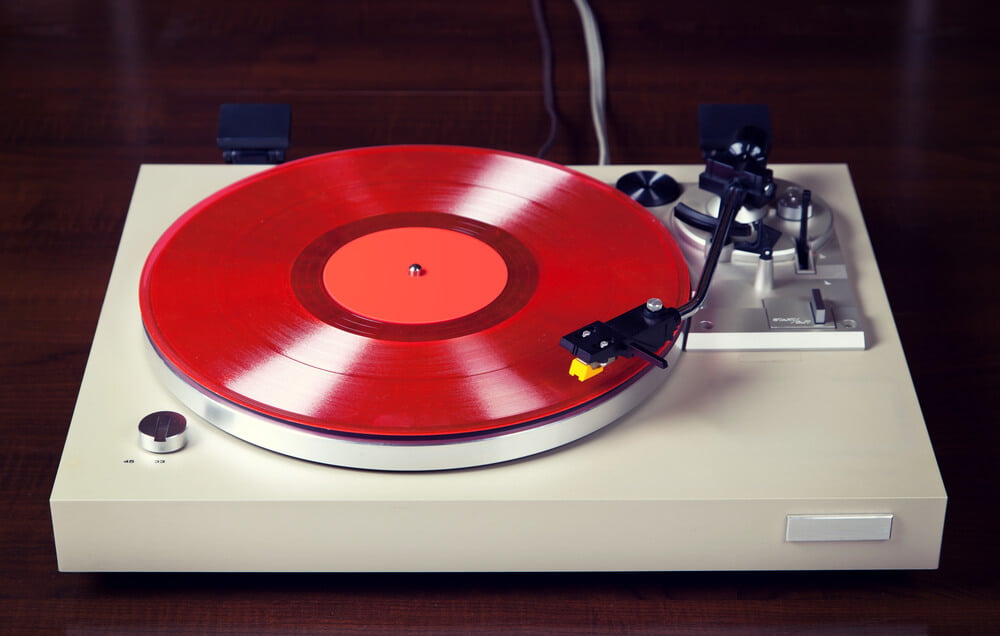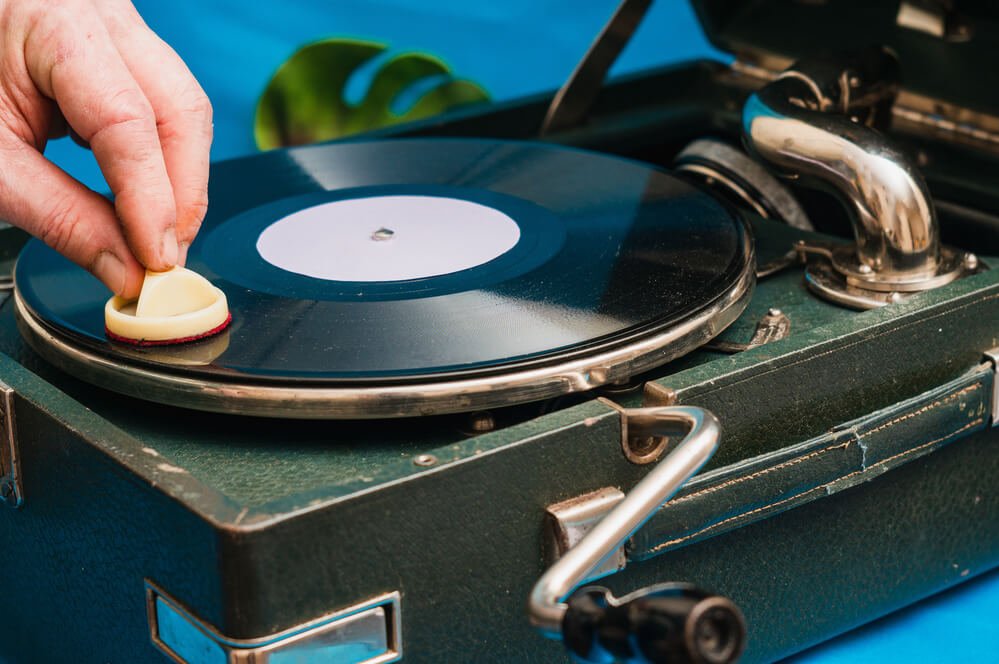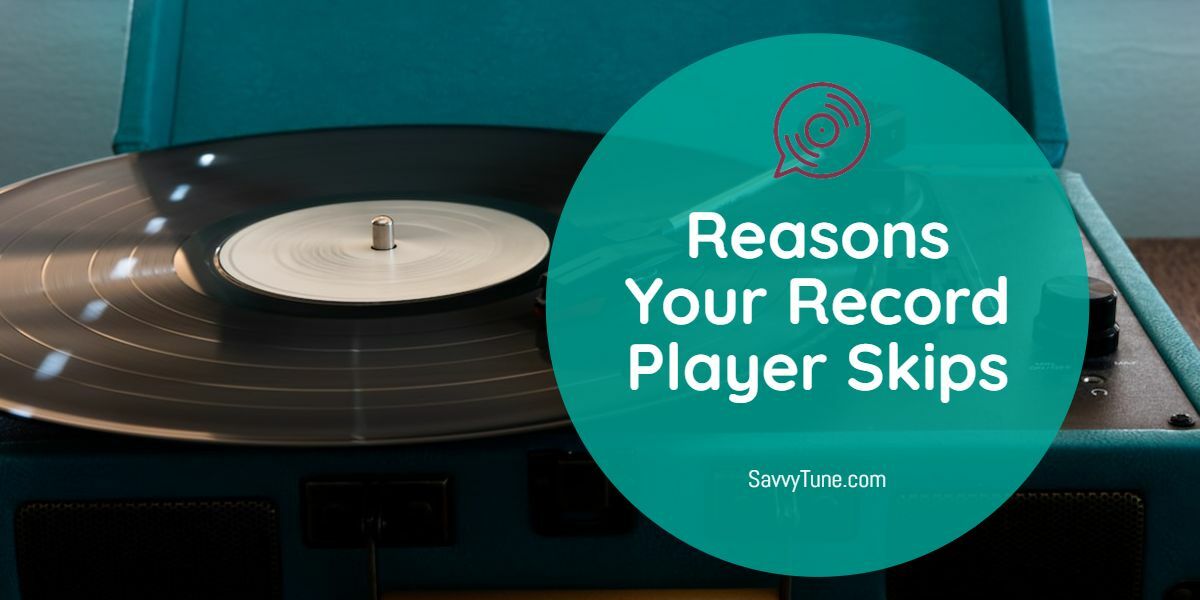You’ve set up the mood, picked up your favorite record, and suddenly, the record player starts skipping. It can be disappointing, but it’s not the end of the world.
So, why does my record player skip? If you’ve been asking yourself this question, keep reading to learn about the reasons and how to fix this problem.
Why Does My Record Player Skip?
A record player usually skips because of dirt buildup or damage. There can also be a problem with the tonearm’s balance. So let’s dive deeper into the reasons why your music stops playing and your record skips right in the middle of your favorite track.

Dust and Dirt Buildup
If you think that keeping your records is their covers is enough to protect them, think again. Of course, the paper sleeves will keep some of the dust off, but if you’re storing your records in a dusty place and aren’t storing them properly, the dust buildup can make your records skip while playing.
Inner sleeves are extremely important because they protect the records from getting scratched by the paper sleeves. They also act as a second layer of protection.
Moreover, you should make sure that your hands are clean while handling your records because the oil from your hands can also ruin them.
Tonearm Imbalance
Squeaky clean records can still skip. In this case, there might be a problem with the tonearm balance. Not only will this cause your record player to skip, but it can also damage your favorite records if it continues for a long time.
The tonearm’s weight should be set properly to protect your records. If it’s too low, the needle will slide across the grooves, making the music skip. If it’s too high, the music will sound distorted. Fixing the balance depends on the brand and model of your record player.
Damaged Record
In some cases, your record player will skip because the record is damaged beyond repair. This can happen because improper storage or handling puts its toll on the delicate records.
Storing the records in the wrong weather conditions or using a rough brush to wipe off the dust can cause irreparable damage. Unfortunately, when this happens, there’s no way to fix it.
Must read: What to Do With Damaged Vinyl Records?
How to Fix Record Skips
Some problems are easy to fix, while others aren’t. The most important thing is to make sure that you follow the right steps while storing and using your records to prevent record skips.
Store the Records Properly
Prevention is better than cure, so protecting your records from damage is the best way to prevent your record player from skipping.
First, you need to make sure that you’re not storing your vinyl records in a humid or hot place, as high temperatures above 50°F can make the records warp. So, unfortunately, the garage won’t be the perfect spot to store your precious records. For everyday use, the records can tolerate temperatures up to 70°Fm but not more.
Always group your records by size and use L-shaped dividers to maintain balance. Heavy-duty plastic boxes will be perfect for long-term use and are better for lifting and storage than cardboard boxes.

Clean Your Records
Whether they’re stored or not, cleaning your records and removing the dust buildup periodically will help keep them in the best shape and prevent records from skipping. Here are some cleaning tips to follow.
- Using a t-shirt or tissue paper isn’t recommended because the surface of the vinyl records is delicate and can be easily damaged. Instead, invest in record cleaning brushes to remove the debris.
- You can buy a vinyl cleaning solution and use it with a soft microfiber cloth for further cleaning. But first, make sure that you read the cleaning instructions on the record to prevent damage.
- Using glue to clean your records sounds odd but can help you get rid of the dust and debris. Lift the tonearm and spin the record, and then apply wood glue starting at the edge of the inner label, and move along until you reach the outer edge. Then, use a piece of cardboard to spread the even glue lines to create a film, and then leave the record for a day until the glue is bone dry.
After that, remove the glue film in one go, and it should remove all the dust with it. Finally, use a microfiber lint-free cloth to wipe the record.
- If nothing works, you can use a magnifying glass to see if there’s any grime accumulating on your record. Use a toothpick to dislodge it, and then a record cleaning brush to wipe it.
Related: Do Vinyl Records Wear Out?
Balance the Tonearm
Balancing the tonearm is necessary whenever you change the cartridge, as cartridges have different weights. The tonearm can also be off balance due to a knock or someone messing with it.
It’s best to refer to the manufacturer’s instructions to ensure that you won’t damage your record player or favorite records. However, if there aren’t specific instructions, you can follow these steps.
- Take your time while balancing the tonearm because this process requires attention to detail. Yet, it can improve the audio quality significantly.
- Set the anti-skate control to zero. The anti-skate usually looks like a circle with numbers on it, but some record players can look different.
- Locate the yoke right in the middle of the tonearm and remove it. Slowly lower the tonearm to protect it from breaking.
- Manipulate the rear-mounted counterweight until the tonearm is level and hangs in the air with no support. After that, tighten the locking nut.
- Locate the tracking weight dial at the end of the tonearm, and make sure that it’s held at a tracking weight of zero. If your player doesn’t come with a tracking weight dial, use a tracking weight gauge to check that it’s balanced.
- Adjust the counterweight again, depending on the cartridge’s instructions.
- Secure the yoke and set the anti-skate weight to be similar to the tracking weight.
Fix Your Records
In most cases, once a record is damaged, there’s no way you could bring it back. However, if a film covers the record or the grooves look uneven, you can try washing it first and then sanding it using a 1500 or finer sanding paper. This might not help, but you can give it a shot.

